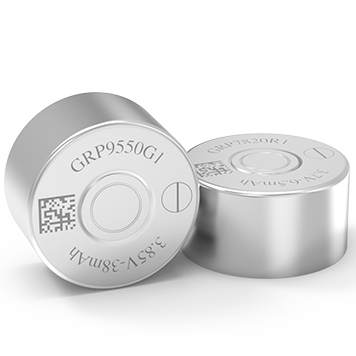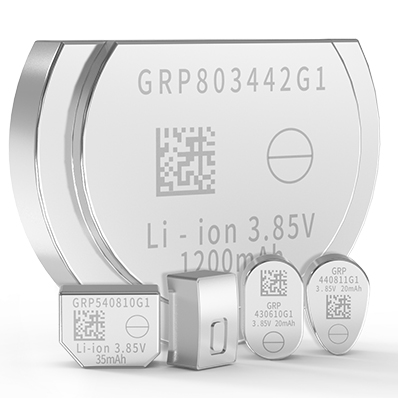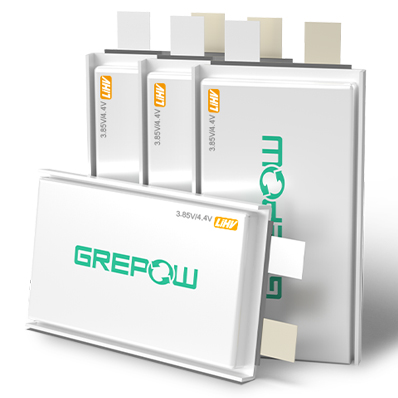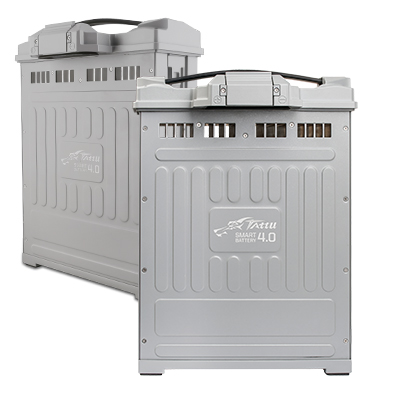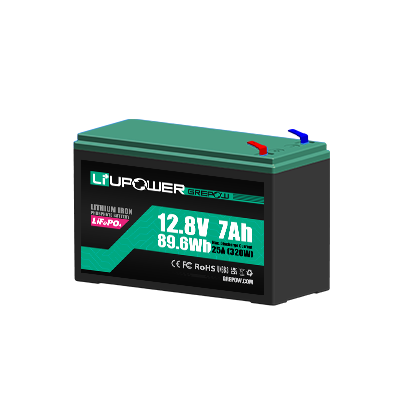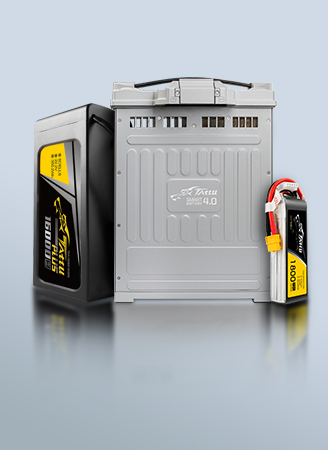What Is the Voltage of a LiPo Battery?
Lithium Polymer (LiPo) batteries have become the standard power source for drones, RC vehicles, robotics, and a variety of portable electronics due to their high energy density, lightweight design, and high discharge rates. Understanding their voltage characteristics is absolutely critical for safety, maximizing performance, and ensuring longevity. In this article, we break down everything you need to know about LiPo battery voltage, including types, ranges, behavior, and how to handle voltage changes properly.
What is LiPo Battery Voltage?
At its core, the voltage of a LiPo battery represents the electrical potential difference between its positive and negative terminals. It represents the "pressure" that pushes the electrical current from the battery to the device it's powering. The higher the voltage, the more power the battery can deliver. Unlike simpler battery chemistries, LiPo voltage is not static; it changes significantly based on the battery's state of charge (SoC), load, temperature, and health. This dynamic nature makes understanding the various voltage points essential.
A single LiPo cell has a specific voltage profile, and most LiPo batteries are composed of one or more cells connected in series (denoted as "S") or parallel (denoted as "P"). The voltage of a LiPo battery is primarily defined by the chemistry of its lithium-ion-based cells, which dictates a nominal voltage and specific thresholds for safe operation.
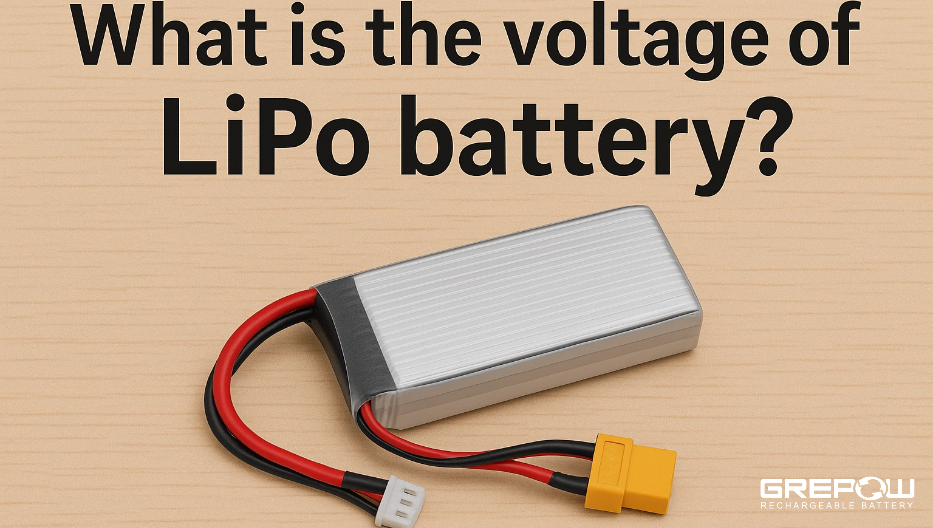
Decoding the Critical Voltage Types of LiPo Batteries
LiPo batteries have several important voltage specifications that users should be familiar with to ensure proper operation and maintenance. Let's explore each of these voltage types in detail:
1. Nominal Voltage
The nominal voltage is the average voltage of a LiPo cell when it is halfway discharged. For most LiPo cells, this is 3.7V per cell. It is commonly used for labeling purposes (e.g., a 4S battery is labeled as 14.8V = 4 × 3.7V).Nominal voltage is important because it helps determine compatibility with various devices and systems. Most electronic equipment is designed to operate within a specific voltage range based on the nominal voltage of the battery it uses.
2. Fully Charged Voltage (Maximum Voltage)
A fully charged LiPo cell reaches 4.2V. This means a 2S battery would have a fully charged voltage of 8.4V, a 3S battery would be at 12.6V, and so on. Exceeding this voltage can lead to overheating, swelling, or even combustion, so charging beyond 4.2V per cell is strictly unsafe unless the battery is specifically labeled as "High Voltage" (HV).
3. Cut-off Voltage (Minimum Safe Voltage)
The safe minimum voltage per cell is typically 3.0V. Discharging below this level can cause permanent damage to the cell. Most modern ESCs or battery monitors will stop power delivery before reaching this limit to protect the battery. Many electronic speed controllers (ESCs) and battery management systems (BMS) include low-voltage cutoff features that prevent batteries from discharging below this threshold. For applications where battery longevity is a priority, some users opt for a slightly higher cutoff of 3.2-3.3V per cell.
4. Over-Discharged Voltage
An over-discharged voltage occurs when a cell drops below the cut-off voltage, typically below 2.5V–3.0V. At this level, the battery’s chemical structure can degrade, leading to reduced capacity, increased internal resistance, or complete failure. Over-discharged batteries may become unstable and unsafe to recharge without specialized equipment.
5. Storage Voltage
For long-term storage, LiPo batteries should be maintained at a specific voltage that minimizes chemical degradation while providing sufficient charge to prevent over-discharge. The optimal storage voltage for LiPo batteries is typically between 3.7V and 3.85V per cell (often aiming for 3.85V), which corresponds to approximately 40-60% of their capacity.Most modern LiPo chargers include a "storage charge" function that automatically brings batteries to this optimal voltage range.
6. Operating Voltage Range
The operating voltage range of a LiPo battery spans from its fully charged state (4.2V per cell) to its minimum safe discharge voltage (3.0V per cell). However, the practical operating range where the battery delivers consistent performance is typically between 3.5V and 4.2V per cell. Within this range, LiPo batteries exhibit a relatively flat discharge curve, meaning the voltage remains fairly stable during most of the discharge cycle until it reaches what's often called the "knee" of the discharge curve, after which voltage drops more rapidly.
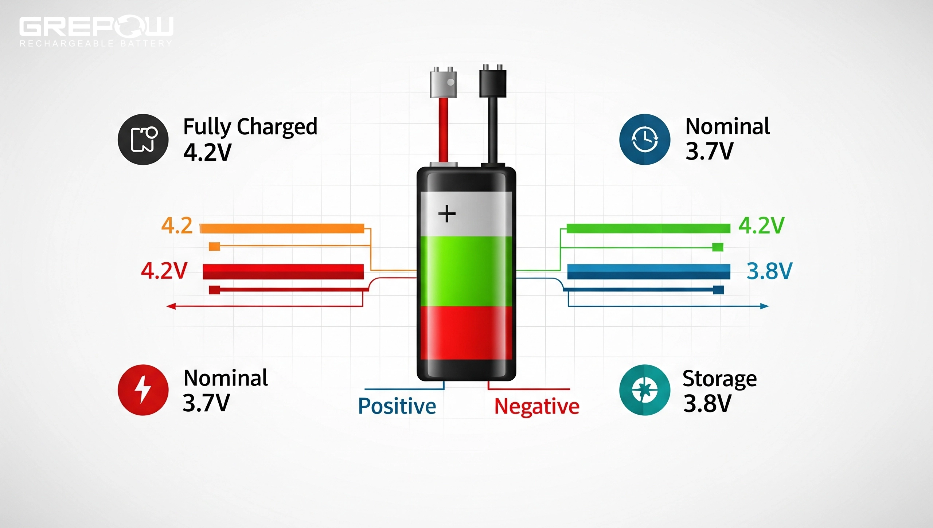
What Determines LiPo Battery Voltage?
The voltage of a LiPo battery is determined by several factors:
●Cell Chemistry: The fundamental determinant of LiPo battery voltage is its electrochemical composition. The electrode potential difference between the cathode and anode materials creates the battery's voltage. This potential is determined by the specific materials used and their ability to release and accept lithium ions during discharge and charge cycles. LiPo batteries use lithium cobalt oxide (LiCoO2) or similar chemistries, which inherently produce a nominal voltage of 3.7V and a maximum of 4.2V per cell.
●Number of Cells in Series (S Rating): Each cell in series adds its voltage to the total. For example, a 4S battery has four cells, each contributing 3.7V nominally, resulting in 14.8V.
●State of Charge (SoC): The voltage varies with the SoC, dropping from 4.2V when fully charged to 3.0V when nearing depletion.
●Load Conditions: Under heavy load, the voltage may sag temporarily due to internal resistance, but it recovers when the load is removed.
●Temperature: Extreme temperatures can affect voltage output. Cold temperatures reduce voltage delivery, while high temperatures may increase voltage slightly but risk damaging the battery.
●Battery Age and Health: Older or damaged cells show greater voltage sag.
●Internal Resistance: Increases with use and age, reducing voltage under load.
How Do I Check the Voltage of My LiPo Battery?
There are several safe ways to check LiPo voltage:
●Battery Voltage Checker: Plug the balance connector into a digital LiPo checker. It shows each cell's voltage and the total voltage.
●Battery Charger with Display: Most smart chargers display the voltage of individual cells.
●Multimeter: Measure directly across terminals for total voltage, or use the balance plug for individual cells.
Always check voltage before and after use to monitor health and ensure safety.
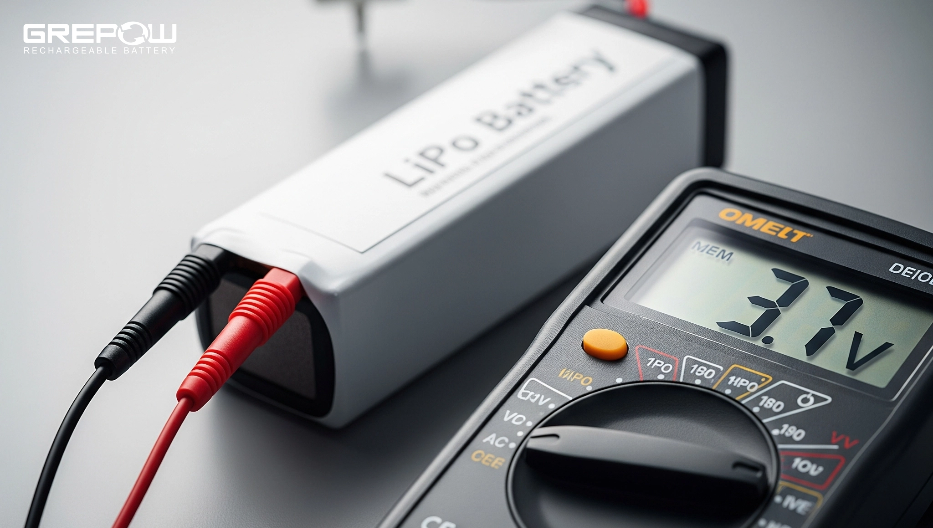
Why Can't the Maximum Voltage of a Standard LiPo Exceed 4.2V?
This 4.2V limit is fundamental chemistry and safety:
●Electrochemical Stability: At voltages significantly above 4.2V (e.g., 4.3V+), the cathode material (LiCoO₂ or similar) becomes highly unstable.
●Lithium Plating: Excess voltage forces too many lithium ions into the anode too quickly. Instead of intercalating smoothly into the graphite, they start to plate as metallic lithium on the anode surface. This plating is irreversible and reduces capacity.
●Cathode Degradation: High voltage accelerates the breakdown of the cathode structure.
●Electrolyte Decomposition: The organic electrolyte solution begins to break down at elevated voltages, generating heat and gas.
●Thermal Runaway: The combined effects – metallic lithium, degraded cathode, decomposing electrolyte, and heat – create a perfect storm for thermal runaway. This is an uncontrollable self-heating reaction that rapidly leads to fire or explosion.
The 4.2V limit is a critical safety barrier designed by electrochemists to keep the battery within stable operating conditions.
What Happens If I Overcharge or Over-Discharge a LiPo Battery?
Both overcharging and over-discharging are detrimental to a LiPo battery's health and safety.
●Overcharging (>4.2V/cell): As mentioned above, this can lead to puffing, thermal runaway, and potentially fire. Even a slight overcharge can significantly reduce the battery's lifespan.
●Over-discharging (<3.0V/cell): Discharging a LiPo below its safe cut-off voltage can cause permanent, irreversible damage to the cell's internal structure. The battery will lose a significant amount of its capacity and may not be able to hold a charge again. A severely over-discharged battery may also be unsafe to recharge.
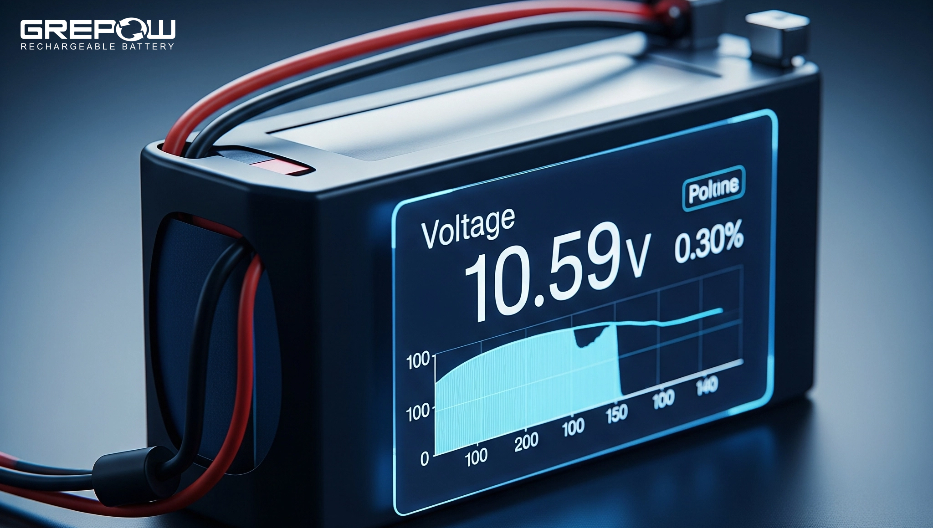
How to Charge a LiPo Battery with Low Voltage?
If a LiPo battery’s voltage is below the safe cut-off (e.g., 3.0V per cell), it may require special care to recover safely:
●Assess the Voltage: Use a multimeter or battery checker to confirm the voltage. If below 2.5V per cell, the battery may be too damaged to recover safely.
●Use a Low-Current Charger: Set a LiPo charger to a low current (e.g., 0.1C or 100mA) and charge in “NiMH” or “manual” mode to slowly raise the voltage to 3.0V–3.2V per cell.
●Switch to LiPo Mode: Once the voltage is above 3.0V, switch to a standard LiPo balance charging mode at the recommended rate (1C or lower).
●Monitor Closely: Watch for swelling, heat, or unusual behavior during charging. Stop immediately if any issues arise.
●Dispose if Unrecoverable: If the battery doesn’t recover or shows signs of damage, dispose of it at a recycling facility. Caution: Charging a severely over-discharged battery can be dangerous.
●Never force-charge an over-discharged LiPo. Use a fireproof bag or container and charge in a well-ventilated area.
What is a High Voltage (HV) LiPo Battery?
●Concept: HV LiPos use modified cathode and/or anode materials and electrolyte formulations designed to be safely charged to a higher maximum voltage than standard LiPos.
●Voltages: A high-voltage LiPo (HVLiPo) battery is designed to be charged to 4.45V per cell instead of 4.2V, offering slightly higher energy density and capacity. These batteries use modified chemistries or additives to handle the increased voltage safely.
●Benefit: The higher charge voltage allows the cell to store more energy (higher capacity in Watt-hours for the same physical size/weight), translating to slightly longer run times.
●Caveats: Requires HV-Compatible Charger: Must be charged using the specific HV charge profile (e.g., "LiHV" mode) set to the correct max voltage (4.35V or 4.45V/cell). Using a standard LiPo charge profile (max 4.20V) will undercharge it and negate the benefit. Using an HV profile on a standard LiPo will overcharge and destroy it.
●Compatibility: Ensure your device (ESC, motor, etc.) can handle the slightly higher operating voltage range.
Is a Higher Voltage Battery Always Better?
Not necessarily. The choice between a higher or lower voltage battery depends on the application.
Advantages of Higher Voltage:
●More Power: Higher voltage allows for a higher power output (Power = Voltage x Current).
●Increased Efficiency: For a given power output, a higher voltage system will draw less current. Lower current can lead to less heat buildup in wires and electronic components.
●Longer Runtimes: Due to increased energy density, HVLiPo batteries can offer longer runtimes.
Disadvantages of Higher Voltage:
●Compatibility: Not all electronic speed controllers (ESCs), motors, and other components are rated for higher voltages. Using a battery with a voltage that is too high can damage or destroy your electronics.
●Cost: High-voltage batteries and the components that can handle them are often more expensive.
How Voltage Changes Affect LiPo Battery Performance
The voltage of a LiPo battery directly impacts its performance during use:
●Power Output: As the battery discharges and its voltage drops, the power available to the motor will also decrease. This is often noticeable as a gradual loss of performance.
●Runtime: The rate at which the voltage drops under load determines the usable runtime of the battery. A battery that can maintain a higher voltage under load for longer will provide better performance and a more consistent power delivery throughout its discharge cycle.
●Lifespan: Consistently overcharging or over-discharging a LiPo battery will significantly reduce its overall lifespan (the number of charge/discharge cycles it can endure). Storing batteries at the correct storage voltage when not in use is also crucial for maximizing their longevity.
Conclusion
Understanding LiPo battery voltage – its definitions, critical thresholds, determining factors, measurement techniques, and the profound consequences of mismanagement – is not optional; it's fundamental. Always use a dedicated LiPo checker, a quality balance charger, and prioritize safe handling practices. By mastering voltage, you unlock the true potential of your LiPo-powered devices while ensuring safe and reliable operation. As a global leader in LiPo battery manufacturing, Grepow produces high-discharge-rate LiPo batteries with ratings up to 45C, and ultra high-voltage LiPo cells reaching 4.45V per cell. These advanced power solutions are perfectly suited for drones and other high-performance applications where power delivery is mission-critical. If you have any questions or needs, please feel free to contact us at info@grepow.com.
Related Articles
-

Powering Aerial Artistry: Grepow Battery Solutions Behind Drone Light Shows
2025-10-27 -
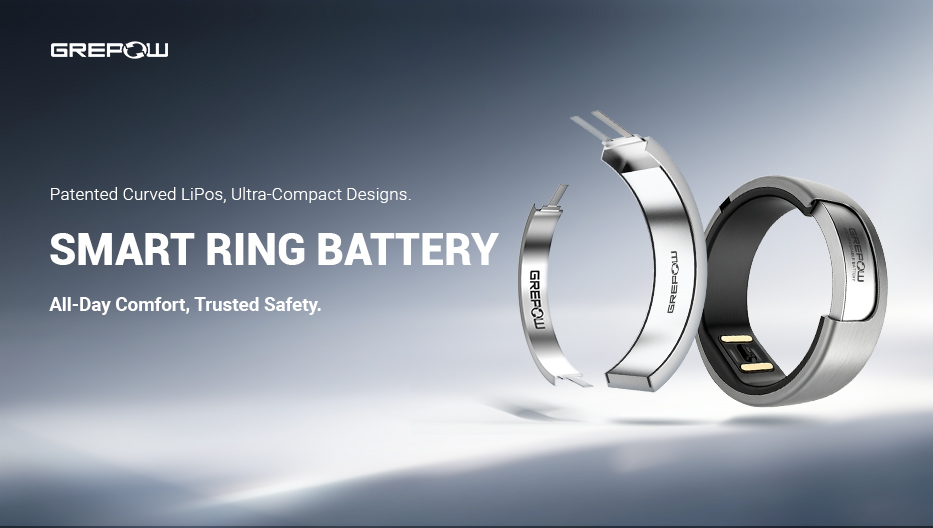
Powering the Future of Wearables: How Grepow's Patented Curved Battery is Revolutionizing the Smart Ring
2025-10-16 -

Grepow Battery Announces Manufacturing Agreement with Powerbanc Group
2025-09-30
Related products
-

-40℃ to 60℃ Low Temperature Lipo Battery
-

45C High Discharge Battery - High C Rate LiPo
-
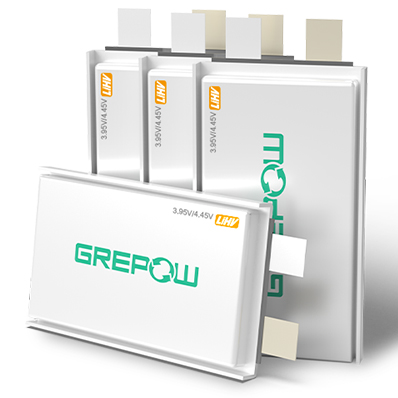
3.95V/4.45V High Voltage Cells




